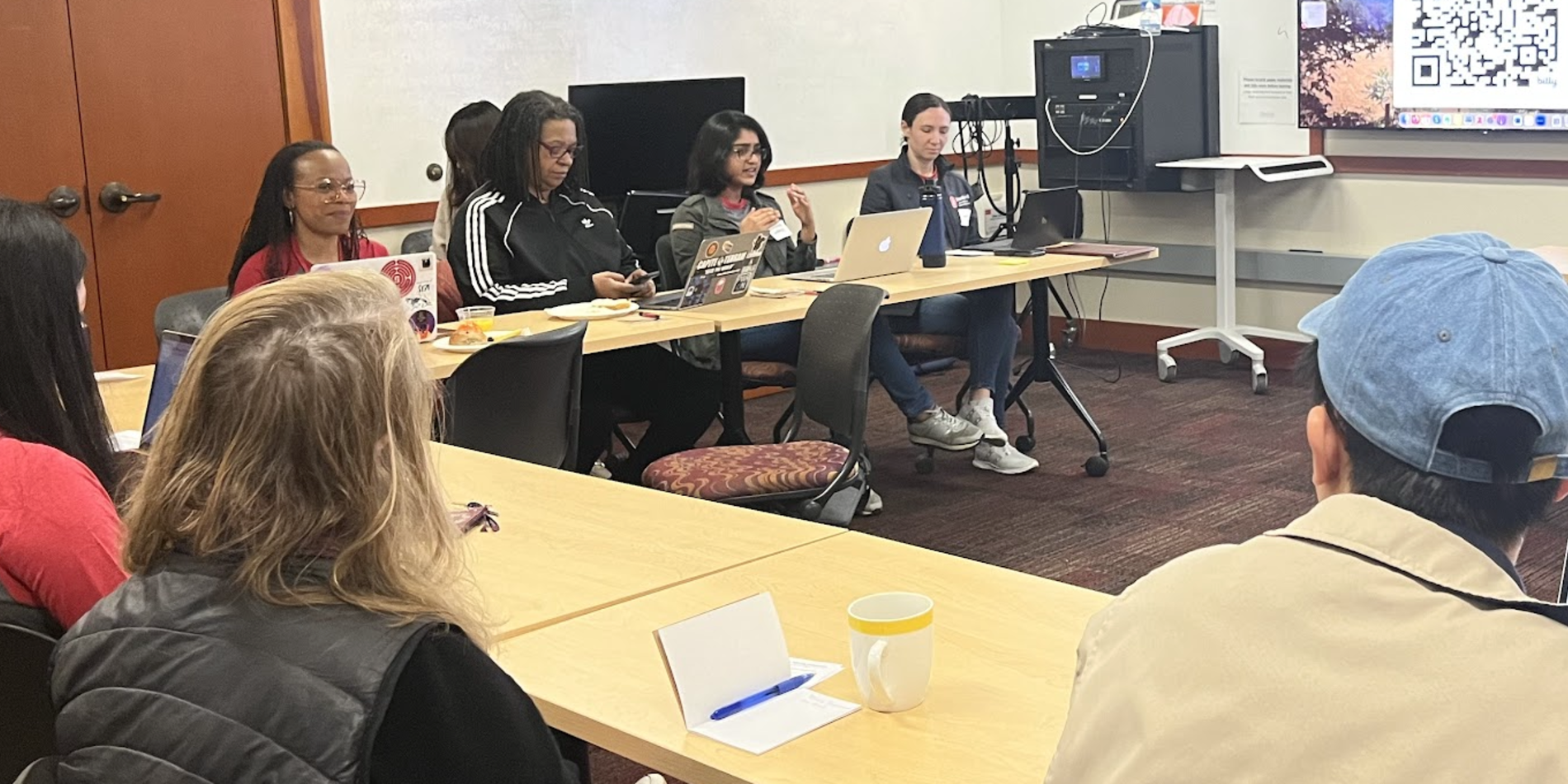Writing Specialist Confidential: Shay Brawn, Human Biology
A WIM Sea Change
This spring, the Writing and Rhetoric Requirement Governance Board approved a change in how the Program in Human Biology designates its Writing in the Major course. Up until now, the WIM class for Hum Bio has been part of the spring quarter of the year-long, 30-unit Hum Bio Core sequence. Now, reflecting an expansion and rethinking that has been underway for more than three years, the entire three-quarter “B-Side” (explained below) sequence will be considered the WIM. What does that mean and why does it matter?
When I started working with the Hum Bio Core in my first year as a writing specialist, I thought of the Core as an ocean liner because of its immense size and the scope of its purpose. It is comprised, essentially, of two lecture classes taken simultaneously: an “A-side” focused on the biological sciences and a “B-side” focused on the social sciences. Students satisfied their WIM requirement in the third quarter of the B-side class, primarily by collaboratively writing a long policy analysis. It takes the combined efforts of 13 faculty from a variety of disciplines, a team of 8 Course Associates (CAs), multiple guest lecturers, and one intrepid Core Coordinator, Annette Salmeen, to create this complex yet coherent educational experience that forms the basis for the major. I was in awe—and still am—of the coordination, energy, and vision it takes to make the Core happen year after year. What would it take to have an impact on how WIM is delivered in this ocean liner of a course?
The WIM seemed a small part of an adventure that is primarily about other things: The students taking the course are primarily on a journey to become Hum Bio majors. In a sense it was cool that the WIM was part of that adventure: it suggested a kind of priority. But in the whole scope of the Core journey, the WIM could easily be experienced as a bit of a day-trip. In some ways, this is no different from the problem faced by any WIM course (and to some extent our own theme-based writing courses): the concrete allure of “subject matter” always threatens to obscure the more meta, processual learning involved in developing writing and other capacities.
However, Hum Bio was intent on strengthening the WIM aspect of the Core, part of a broader impetus from an initiative undertaken by Paul Fisher, Hum Bio’s faculty director, and Katherine Preston, Hum Bio’s associate director, to place the development of “capacities”—Communication, Data Analysis, and Scientific Literacy—front and center in Hum Bio’s learning goals for its majors. That beginning of the effort (which you can see reflected in Hum Bio’s ExploreDegrees description), happily coincided with the start of the Writing Specialist initiative.
The process of making change has been deeply collaborative, and it has been incremental and evolving: it started with creating new writing assignments for the first quarter of the Core on both the A and B sides and supporting the development of the CAs with training in assignment design, feedback, and assessment. Even if the WIM was officially only in the third quarter, students would be developing as writers, and CAs as writing instructors, for the entire sequence. In the summer of 2015, after some of our initial changes had been in effect for a year, Annette, Katherine (who both teaches in the Core and is a member of the Writing Governance Board), and I, with the support of VPUE, undertook a detailed analysis of how writing instruction was happening throughout the Core in order to strengthen extend those efforts. Together we mapped the learning goals of every assignment and every element of instruction that supported those learning goals, a process that impacted assignment design, section plans, CA training, and assessment. The following summer, we followed up with an assessment of what we had done and instituted further changes. The result was writing curriculum that spanned the entire three-quarter curriculum and crossed the A-side/B-side barrier.
I don’t think any of us could have anticipated in that first year the nature and scope of the evolution. That’s because the process of working together, of continually assessing and adjusting, changed how all of us look at the role writing did and could play in the education of these future Hum Bio majors, not only as an additional item in their skillsets but also as a mode of intellectual development. That understanding shapes everything from the specific learning goals articulated in every writing assignment to the criteria by which those assignments are assessed: leaning how to communicate as a Hum Bio is part of learning how to think like a Hum Bio major.
The Core, already the flagship for the Hum Bio enterprise, to my mind has become the flagship for WIM, not because it is a model for what every WIM could or should look like, but because it reflects what it is possible when a program or department really embraces the possibilities of what a WIM can be.



